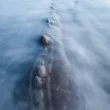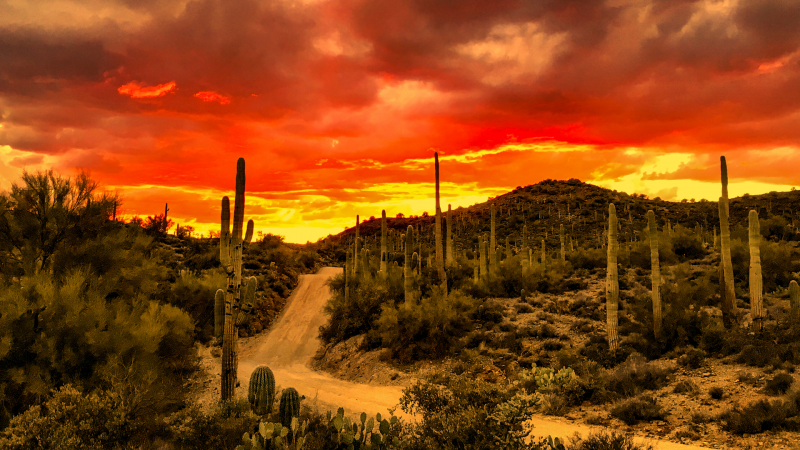When planning a trip to a desert, there are always risks. Deserts, like the Sonoran Desert, are naturally devoid of water and can be dangerous for hikers and backpackers. But it’s not only the climate that can wreak havoc on visitors. Dangerous animals also make their homes here, so it’s crucial to know what species to look out for while exploring.
Let’s take a closer look at the five hidden dangers of the Sonoran Desert so you can prepare for what lies in this region of the United States.
What Is the Sonoran Desert?
There are four deserts in North America: the Great Basin, Mojave, Chihuahuan, and Sonoran. The Chihuahuan desert is the largest, covering approximately 193,000 square miles, with the Great Basin Desert closely following at about 190,000 square miles.
Both the Sonoran and Mojave deserts are less than 100,000 square miles. The Sonoran Desert covers approximately 86,000 square miles, while the Mojave, the smallest North American desert, covers about 31,000 square miles.
More than two-thirds of the Sonoran Desert is in Baja, California, and the Mexican state of Sonora. The northern part of the desert stretches into the lower third of Arizona and southeastern California.
Unlike other barren, arid deserts, the Sonoran Desert gets rain twice a year in winter and summer. This allows for a diverse selection of plants to thrive. But even with this rainfall, it only amounts to about three to four inches per year in the southern region of Sonora and up to 12 inches yearly in the northern part of Arizona.

What Is the Sonoran Desert Known for?
If you’ve traveled through southern Arizona, you’ve seen the iconic saguaro cacti. These cacti can grow up to 40 feet tall and live up to 150 years. In 1994, the government established Saguaro National Park to protect this species and its habitat.
In addition, the only group of jaguars living in the United States lives in the Sonoran Desert. This desert is also home to over 300 bird species, 30 native fish, and over 2,000 plant species. The southern part of the Sonoran Desert is the hottest desert in Mexico.
What Is Only Found in the Sonoran Desert?
Since this desert is the most biologically diverse of the four North American deserts, there are hundreds of wild animals and plant species. One of these animals is the cactus ferruginous pygmy owls, which live in the saguaro cacti. These owls are a protected species in the Endangered Species Act.
HOT TIP
Saving money while camping is great, but Don’t Visit These Arizona Boondocking Spots.

Although you’ve probably seen beautiful sunset photos of the saguaro cacti in the foreground of skies turning orange and red in southern Arizona, it’s not all spectacular colors and scenery. There are dangers to visiting the Sonoran Desert. Let’s look at five.
1. Lack of Water
Even though the Sonoran Desert receives more rainfall than other North American deserts, it’s still a desert. There are no watering holes to refill water bottles or places to take a dip to get away from the heat. Dehydration and heat stroke are real threats for hikers and travelers.
2. Black Widow Spider
Notorious for their neurotoxic venom, black widow spiders are extremely dangerous. Their venom is 15 times more potent than that of a rattlesnake. Although they live worldwide, you can find a high concentration in the Sonoran Desert.
People know them for their hourglass-shaped marking on the underside of their abdomen, which is usually red. If they bite you, you may feel muscle and chest pain, have difficulty breathing, and experience nausea, along with other symptoms.
3. Brown Recluse Spider
Although not an aggressive spider, the brown recluse can still pose a severe threat to humans. When they feel trapped, they’ll bite. A stinging sensation accompanies the bite, and pain can last up to eight hours. The victim may see swelling, and a blister may appear.
Although there is no anti-venom for a brown recluse spider bite, doctors can prescribe pain medication and antibiotics to prevent infection. Always wear gloves when moving firewood, and be careful when lifting rocks. Brown recluse spiders like to hide, so these are prime locations where they might be sitting.

4. Gila Monster
Gila monsters are very common in the Sonoran Desert, but it’s doubtful you’ll encounter one because they tend to stay underground. However, they’re one of only two venomous lizards in the world. So if you meet one, you don’t want to harass or touch it.
Gila monsters won’t let go once they bite because the venom releases as they begin chewing. A victim will experience extreme pain, but Gila monster bites rarely turn fatal. If one bites you, pry the animal off and contact the Poison Control Center immediately.
5. Rattlesnake
The tiger rattlesnake only lives in the Sonoran Desert. This snake species lives near rocks and cacti rather than in sandy lowlands. It has a small head and large rattle with 35-52 closely-spaced crossbands. The venom of a tiger rattlesnake has the second-highest toxicity of all rattlesnake venoms.
The black-tailed rattlesnake is another species in the Sonoran Desert near rocky areas and cacti. It’s easy to recognize because of its black tail. Its venom is less toxic than the tiger rattlesnake, and it needs to inject a lot of it to be dangerous to prey.
HOT TIP
Use these 5 Tips to Avoid an Unwanted Rendezvous With a Rattlesnake while in the Sonoran Desert.
Is the Sonoran Desert Worth Visiting?
The Sonoran Desert is a beautiful region of the United States and Mexico. Seeing the towering saguaro cacti in person and the endangered pygmy owls that inhabit them is truly remarkable. But the desert can be a dangerous place. Always tell someone where you are if you go hiking, and take appropriate precautions when encountering wildlife.
However, don’t let these hidden dangers prevent you from experiencing the beauty and uniqueness of the Sonoran Desert. Visit southern Arizona and take in all that this area offers!
Have you ever watched a sunset in Saguaro National Park?
If You Love RVing, You Need to Stay Informed
Don’t rely on biased RV industry news sources to keep you informed with RVing news.
Stick with Nomadic News. We publish daily articles and breaking stories that matter to your RV lifestyle.










